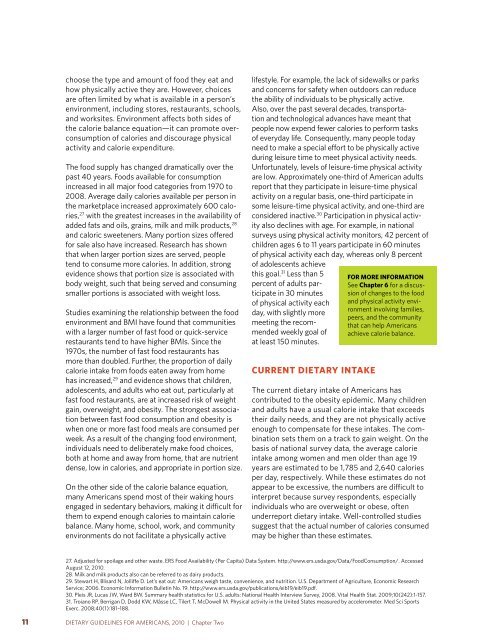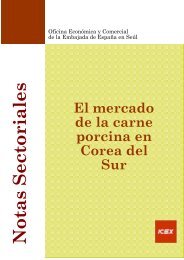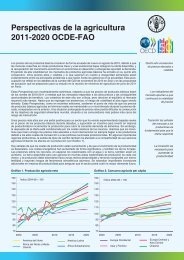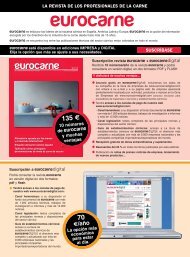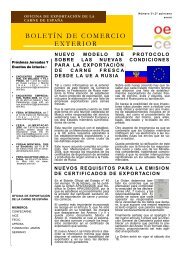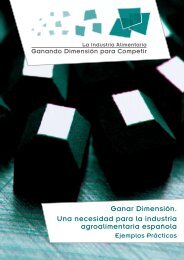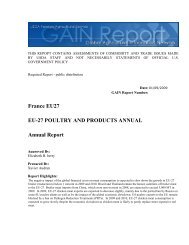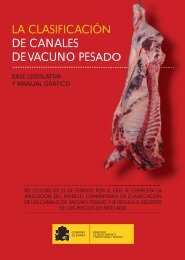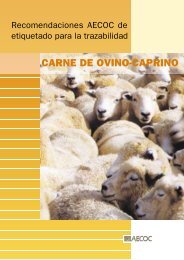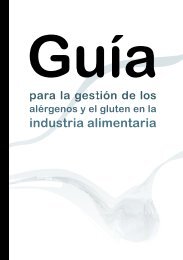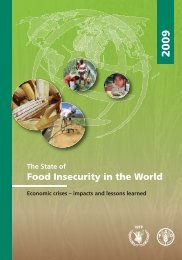Dietary Guidelines for Americans - SchoolNutritionAndFitness.com
Dietary Guidelines for Americans - SchoolNutritionAndFitness.com
Dietary Guidelines for Americans - SchoolNutritionAndFitness.com
- No tags were found...
You also want an ePaper? Increase the reach of your titles
YUMPU automatically turns print PDFs into web optimized ePapers that Google loves.
choose the type and amount of food they eat andhow physically active they are. However, choicesare often limited by what is available in a person’senvironment, including stores, restaurants, schools,and worksites. Environment affects both sides ofthe calorie balance equation—it can promote overconsumptionof calories and discourage physicalactivity and calorie expenditure.The food supply has changed dramatically over thepast 40 years. Foods available <strong>for</strong> consumptionincreased in all major food categories from 1970 to2008. Average daily calories available per person inthe marketplace increased approximately 600 calories,27 with the greatest increases in the availability ofadded fats and oils, grains, milk and milk products, 28and caloric sweeteners. Many portion sizes offered<strong>for</strong> sale also have increased. Research has shownthat when larger portion sizes are served, peopletend to consume more calories. In addition, strongevidence shows that portion size is associated withbody weight, such that being served and consumingsmaller portions is associated with weight loss.Studies examining the relationship between the foodenvironment and BMI have found that <strong>com</strong>munitieswith a larger number of fast food or quick-servicerestaurants tend to have higher BMIs. Since the1970s, the number of fast food restaurants hasmore than doubled. Further, the proportion of dailycalorie intake from foods eaten away from homehas increased, 29 and evidence shows that children,adolescents, and adults who eat out, particularly atfast food restaurants, are at increased risk of weightgain, overweight, and obesity. The strongest associationbetween fast food consumption and obesity iswhen one or more fast food meals are consumed perweek. As a result of the changing food environment,individuals need to deliberately make food choices,both at home and away from home, that are nutrientdense, low in calories, and appropriate in portion size.On the other side of the calorie balance equation,many <strong>Americans</strong> spend most of their waking hoursengaged in sedentary behaviors, making it difficult <strong>for</strong>them to expend enough calories to maintain caloriebalance. Many home, school, work, and <strong>com</strong>munityenvironments do not facilitate a physically activelifestyle. For example, the lack of sidewalks or parksand concerns <strong>for</strong> safety when outdoors can reducethe ability of individuals to be physically active.Also, over the past several decades, transportationand technological advances have meant thatpeople now expend fewer calories to per<strong>for</strong>m tasksof everyday life. Consequently, many people todayneed to make a special ef<strong>for</strong>t to be physically activeduring leisure time to meet physical activity needs.Un<strong>for</strong>tunately, levels of leisure-time physical activityare low. Approximately one-third of American adultsreport that they participate in leisure-time physicalactivity on a regular basis, one-third participate insome leisure-time physical activity, and one-third areconsidered inactive. 30 Participation in physical activityalso declines with age. For example, in nationalsurveys using physical activity monitors, 42 percent ofchildren ages 6 to 11 years participate in 60 minutesof physical activity each day, whereas only 8 percentof adolescents achieve31this goal. Less than 5percent of adults participatein 30 minutesof physical activity eachday, with slightly moremeeting the re<strong>com</strong>mendedweekly goal ofat least 150 minutes.current dietary intake<strong>for</strong> More in<strong>for</strong>MationSee chapter 6 <strong>for</strong> a discussionof changes to the foodand physical activity environmentinvolving families,peers, and the <strong>com</strong>munitythat can help <strong>Americans</strong>achieve calorie balance.The current dietary intake of <strong>Americans</strong> hascontributed to the obesity epidemic. Many childrenand adults have a usual calorie intake that exceedstheir daily needs, and they are not physically activeenough to <strong>com</strong>pensate <strong>for</strong> these intakes. The <strong>com</strong>binationsets them on a track to gain weight. On thebasis of national survey data, the average calorieintake among women and men older than age 19years are estimated to be 1,785 and 2,640 caloriesper day, respectively. While these estimates do notappear to be excessive, the numbers are difficult tointerpret because survey respondents, especiallyindividuals who are overweight or obese, oftenunderreport dietary intake. Well-controlled studiessuggest that the actual number of calories consumedmay be higher than these estimates.27. Adjusted <strong>for</strong> spoilage and other waste. ERS Food Availability (Per Capita) Data System. http://www.ers.usda.gov/Data/FoodConsumption/. AccessedAugust 12, 2010.28. Milk and milk products also can be referred to as dairy products.29. Stewart H, Blisard N, Jolliffe D. Let’s eat out: <strong>Americans</strong> weigh taste, convenience, and nutrition. U.S. Department of Agriculture, Economic ResearchService; 2006. Economic In<strong>for</strong>mation Bulletin No. 19. http://www.ers.usda.gov/publications/eib19/eib19.pdf.30. Pleis JR, Lucas JW, Ward BW. Summary health statistics <strong>for</strong> U.S. adults: National Health Interview Survey, 2008. Vital Health Stat. 2009;10(242):1-157.31. Troiano RP, Berrigan D, Dodd KW, Mâsse LC, Tilert T, McDowell M. Physical activity in the United States measured by accelerometer. Med Sci SportsExerc. 2008;40(1):181–188.11DIETARY GUIDELINES FOR AMERICANS, 2010 | Chapter Two


